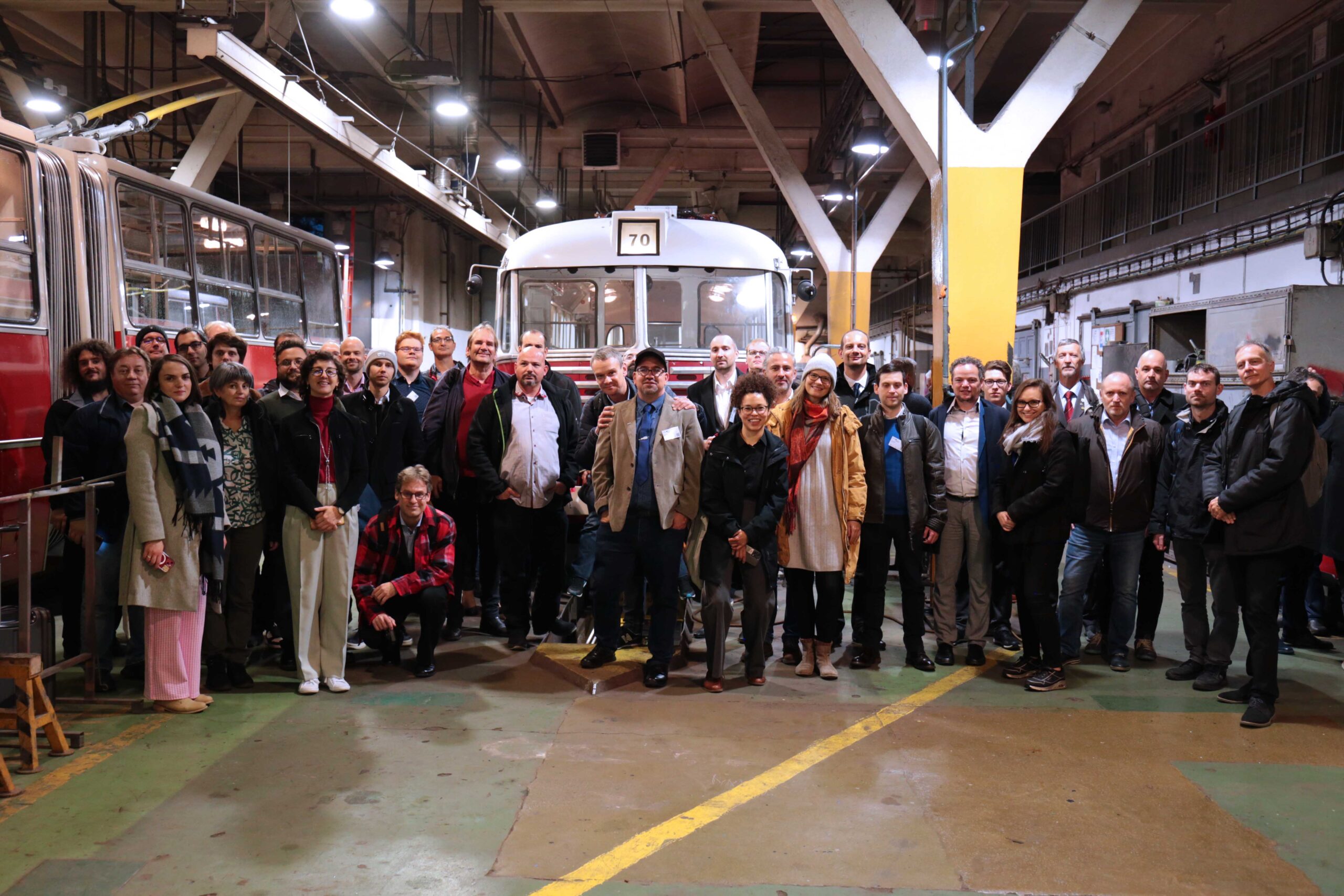The CE4CE project (Circular Economy for Central Europe) aims to implement circular economy principles in public transport. As part of the Interreg Central Europe Programme, CE4CE brings together partners from six Central European countries to develop sustainable solutions for resource use, waste prevention, and recycling in transport systems. Significant progress was achieved in 2024, setting new standards for sustainable mobility.
Successful Pilot Projects
In 2024, six pilot initiatives were carried out in partner cities, demonstrating the practical application of circular economy principles:
- Gdynia, Poland: A digital twin was developed to simulate circular scenarios for electrifying an e-corridor. Prof. Dr. Marcin Wolek from the University of Gdańsk noted: “Our analyses show that a combination of trolleybuses and opportunity charging offers the optimal balance between costs and energy efficiency.”
- Bergamo, Italy: A predictive maintenance system utilizing advanced sensor technology and AI analyses was introduced. The combination of real-time data, GPS, and cameras not only reduces maintenance costs but also maximizes the service life of vehicles and infrastructure. Jan Röhl of Kruch Railway Innovations emphasized: “Our technology demonstrates how digital tools can increase efficiency while supporting circular economy principles.”
- Leipzig, Germany: Efforts focused on extending vehicle service life through advanced maintenance strategies and improved lifecycle management.
- Vienna, Austria: Kruch Railways Innovations is a key player in this project and is conducting several innovative pilots. These include the development and implementation of infrastructure and vehicle components for digital optimization, predictive maintenance and improving the efficiency of public transport. Another implemented solution is the Energy Flow Simulation (EFS) developed for PT systems in the cities of Gdynia (Poland) and Bergamo (Italy), which helps optimize energy consumption in electric transport networks as well as immensely facilitates decision making on further public transport electrification.
- Szeged, Hungary: A system was developed to reuse batteries from electric vehicles in stationary applications.
- Maribor, Slovenia: A model was created to incorporate recycled materials into transport infrastructure.
Key Outputs
Several critical tools and platforms were developed as part of the project:
- Knowledge Platform: A knowledge hub offering best practices, guidelines, and resources. It also features the “Circularity Compass”, an innovative self-assessment tool for evaluating and enhancing circular economy practices.
- Circularity Compass: This tool enables transport operators to assess their progress in adopting circular economy principles and make targeted improvements. Armin Nachtschatt of Bayerische Regionalbahn (Transdev) explained: “The Circularity Compass offers a unique opportunity to evaluate and improve sustainable practices in public transport.”
Events and Knowledge Transfer
In 2024, CE4CE reached a wide audience through webinars, workshops, and international events:
- European Week of Regions and Cities: This event highlighted the importance of the circular economy in public transport, presenting solutions for resource conservation, sustainable maintenance, and innovative recycling strategies.
Quotes:
- Jan Röhl, Kruch Railway Innovations: “Our AI-based analyses not only reduce maintenance costs but also significantly extend the service life of infrastructure and vehicles. This is a real benefit for sustainable mobility.”
- Laura Lopez, Rupprecht Consult: “The circular economy is not an add-on but a necessity if we want to make the future of transport sustainable.”
Results and Outlook
With a budget of €2.3 million and a duration of 36 months, CE4CE has demonstrated how public transport systems can utilize circular economy principles to drive sustainable transformation. Collaboration among eleven partners from Austria, Italy, Germany, Hungary, Poland, and Slovenia has led to significant advancements.
Challenges such as regulatory hurdles and limited funding remain. CE4CE plans to address these through enhanced knowledge transfer, the development of a digital marketplace for second-hand components, and hands-on training programs.
Author: Alexandra Scharzenberg, trolley:motion
